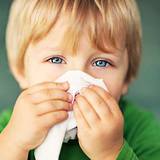Shop
02368
https://www.under5s.co.nz/shop/Hot+Topics+Articles/Health+%26+Wellbeing/Preschoolers/Vitamin+D+Are+Your+Kids+Getting+Enough.html
Are your kids getting enough Vitamin D?
|
How do you know if your kids are getting enough vitamin D or if they're deficient in anyway? We look at the importance of vitamin D, common sources and how to ensure your kids get enough vitamin D on a daily basis.
|
You might also be interested in ...
Reducing the risk of SIDS
Is your baby sleeping safely or is your baby at risk to Sudden Infant Death Syndrome (SIDS)? In New Zealand, SIDS is one of the leading causes of death among babies who are 1 month to 12 months old. It claims the lives of around 45 babies each year in this country. Find out how you can prevent and help reduce the risk of SIDS happening to your baby.
Hay fever tips for young kids
Do you have young kids who are prone to seasonal hay fever? Runny nose, itchy eyes and lots of sneezing? As we head into the warmer months seasonal hay fever will start to strike. Find out what you can do to help.
join usJoin us on social media for all our latest news. |
sign upSign up and receive our latest newsletters. |
|







We look at the importance of vitamin D, common sources and how to ensure your kids get enough vitamin D on a daily basis.
Are your kids getting enough vitamin D?
What is vitamin D?
Vitamin D has many benefits and is often referred to as the ‘sunshine vitamin’ because it's produced in our skin in response to sunlight.
Vitamin D helps our bodies absorb calcium to build and maintain strong bones and teeth.
Vitamin D also plays a role in supporting the development of our immune systems and preventing the onset of some auto immune disorders such as multiple sclerosis.
It helps to prevent health problems such as heart disease, diabetes, osteoporosis and thinning bones too.
Vitamin D deficiency
Most people don’t get enough vitamin D, especially in the winter time. It’s one of the reasons we get more coughs and colds in the middle of winter.
Vitamin D deficiency is of particular concern for pregnant and breastfeeding women. If a woman is vitamin D deficient, her developing baby will be too.
Vitamin D deficiency can also lead to pre-term birth.
Premature babies are at greater risk of vitamin D deficiency.
Vitamin D deficiency in young children can lead to failure to thrive, rickets and increased susceptibility to respiratory infections such as bronchiolitis.
Sources of vitamin D
When our skin is exposed to sunlight, the ultraviolet B (UVB) rays from the sun are used to make vitamin D.
Our bodies naturally produce vitamin D when we’re outside in the sun.
So, many babies, toddlers and preschool kids get enough vitamin D naturally from being outdoors during daily activities, such as playing, walking, biking or riding their scooter.
Vitamin D is available in small amounts in dietary sources too such as in oily fish (salmon, sardines) and some fortified sources.
Breastfed babies get some vitamin D via their mum’s milk. However, it's not possible to get all of our vitamin D requirements from diet alone.
Many foods are fortified (have vitamin D added), and supplements are available for kids who still need more vitamin D.
Getting enough vitamin D
Exposing skin to the sun for 10-15 minutes per day (hands, face, arms), without sunscreen on (as this blocks the absorption of UVB) can ensure you and your family are getting adequate vitamin D.
However you still need to be sun smart as it’s not recommended to expose babies and children to the sun between 10am and 4pm in the spring and summer.
UVB does not pass through glass, so sunning babies in front of a window will not help.
For pregnant and breastfeeding women, supplementation is a recommended way of getting adequate vitamin D.
Your doctor can prescribe a vitamin D supplement that comes in drops. The drops can either be put on your nipple before your baby latches on or given directly into your baby’s mouth using a dropper.
Who’s at Risk for vitamin D Deficiency?
Those at risk of vitamin D deficiency include:
If you are concerned you and your child may be vitamin D deficient a quick chat to your doctor and prescribed supplementation is available if needed.
A blood test is also available to check for vitamin D deficiency, but there may be a cost involved.
More kids articles to enjoy:
Source: This article was written for us by Baby & Beyond Post Natal and Sleep Consultants.
Image source: theexaminer